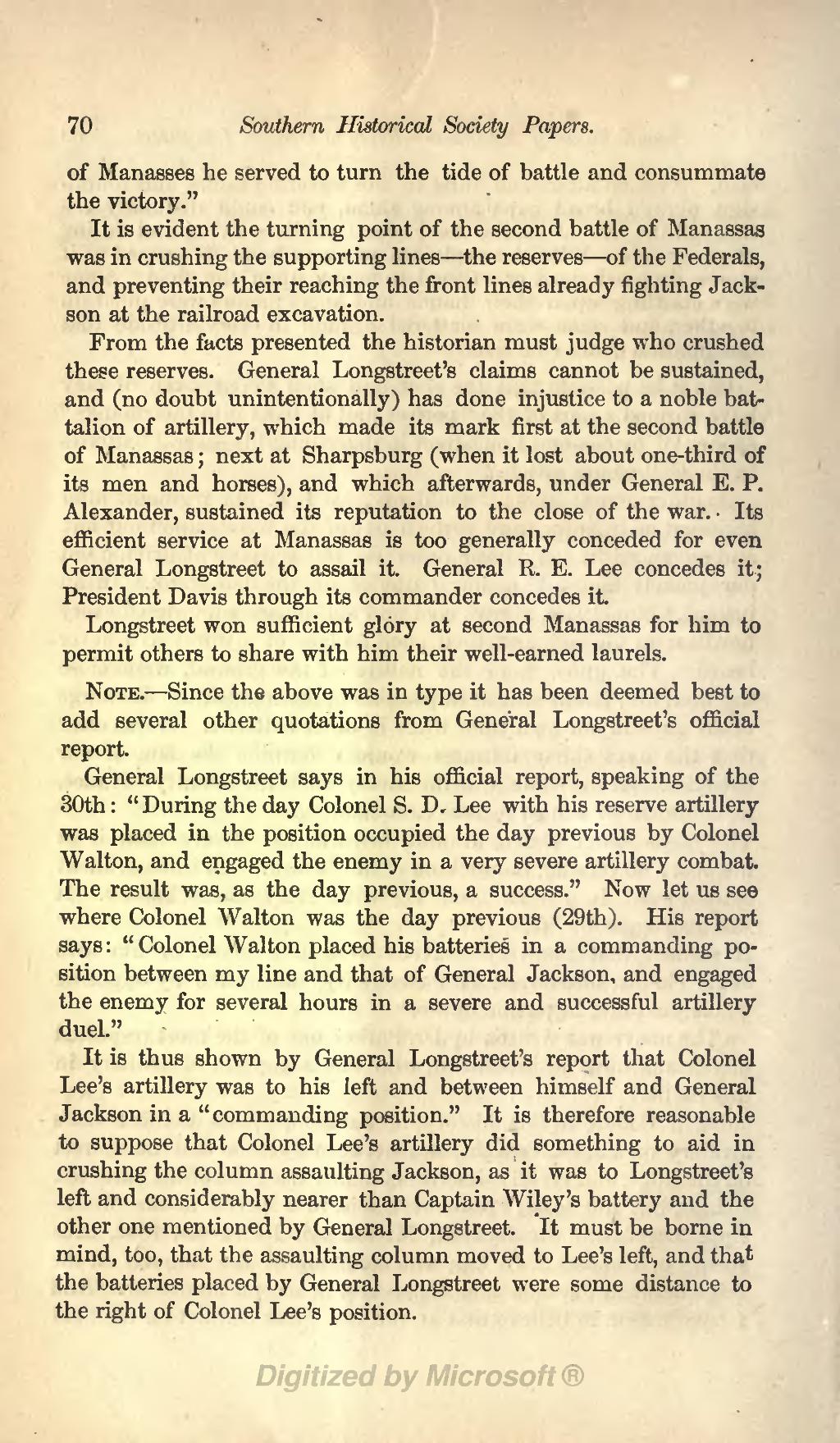of Manasses he served to turn the tide of battle and consummate the victory."
It is evident the turning point of the second battle of Manassas was in crushing the supporting lines—the reserves—of the Federals, and preventing their reaching the front lines already fighting Jackson at the railroad excavation.
From the facts presented the historian must judge who crushed these reserves. General Longstreet's claims cannot be sustained, and (no doubt unintentionally) has done injustice to a noble battalion of artillery, which made its mark first at the second battle of Manassas; next at Sharpsburg (when it lost about one-third of its men and horses), and which afterwards, under General E. P. Alexander, sustained its reputation to the close of the war. Its efficient service at Manassas is too generally conceded for even General Longstreet to assail it. General R. E. Lee concedes it; President Davis through its commander concedes it.
Longstreet won sufficient glory at second Manassas for him to permit others to share with him their well-earned laurels.
Note.—Since the above was in type it has been deemed best to add several other quotations from General Longstreet's official report.
General Longstreet says in his official report, speaking of the 30th: "During the day Colonel S. D. Lee with his reserve artillery was placed in the position occupied the day previous by Colonel Walton, and engaged the enemy in a very severe artillery combat. The result was, as the day previous, a success." Now let us see where Colonel Walton was the day previous (29th). His report says: "Colonel Walton placed his batteries in a commanding position between my line and that of General Jackson, and engaged the enemy for several hours in a severe and successful artillery duel."
It is thus shown by General Longstreet's report that Colonel Lee's artillery was to his left and between himself and General Jackson in a "commanding position." It is therefore reasonable to suppose that Colonel Lee's artillery did something to aid in crushing the column assaulting Jackson, as it was to Longstreet's left and considerably nearer than Captain Wiley's battery and the other one mentioned by General Longstreet. It must be borne in mind, too, that the assaulting column moved to Lee's left, and that the batteries placed by General Longstreet were some distance to the right of Colonel Lee's position.
